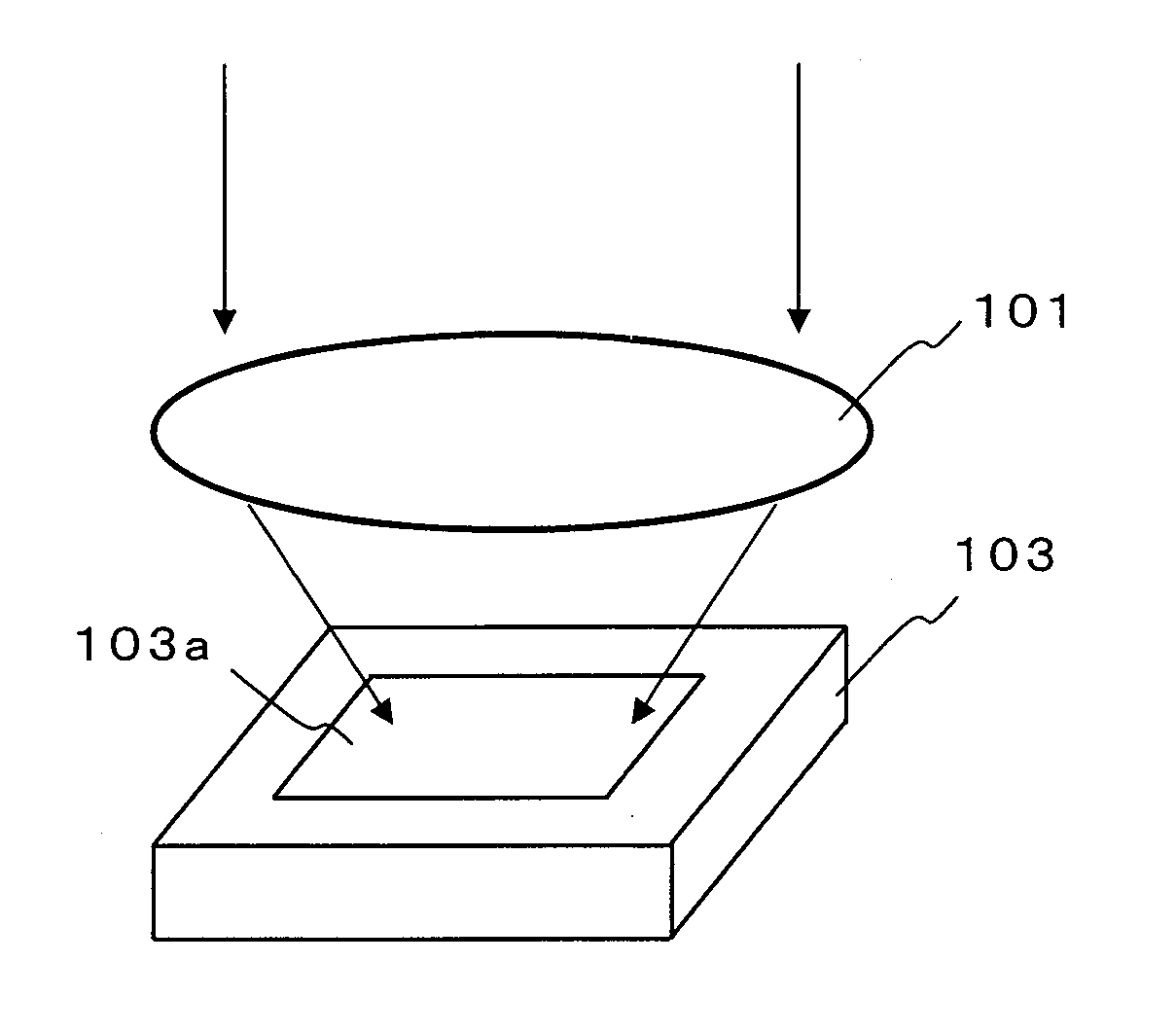Solid-state imaging device
a solid-state imaging and sensitivity technology, applied in the field can solve the problems of decreasing optical efficiency, affecting the sensitivity of solid-state imaging devices, and affecting the sensitivity of solid-state imaging devices, and achieve the effect of high optical efficiency and high optical efficiency
- Summary
- Abstract
- Description
- Claims
- Application Information
AI Technical Summary
Benefits of technology
Problems solved by technology
Method used
Image
Examples
embodiment 1
[0129]FIG. 1a is a perspective view illustrating how light that has been transmitted through a lens 101 is incident on a solid-state imaging device 103. On the imaging plane 103a of the solid-state imaging device 103, arranged two-dimensionally are a lot of photosensitive cells. Since the light is imaged by the lens 101, the intensity of the light falling on the imaging plane 103a (which will be referred to herein as an “incident light intensity”) varies according to the point of incidence. Those photosensitive cells are typically photodiodes, each of which outputs an electrical signal representing the incident light intensity by photoelectric conversion (such a signal will be referred to herein as a “photoelectrically converted signal”). The solid-state imaging device 103 is typically implemented as a CCD or a CMOS sensor and is fabricated by known semiconductor device processing. In the solid-state imaging device 103 of this preferred embodiment, an array of optical elements with ...
embodiment 2
[0145]Hereinafter, a second preferred embodiment of the present invention will be described with reference to the accompanying drawings. FIG. 2A is a plan view illustrating the arrangement of an array of optical elements according to this second preferred embodiment of the present invention in an imager that uses a 2 by 2 matrix of photosensitive cells as its fundamental unit. FIG. 2B is a plan view illustrating the kinds of light rays to be incident on those photosensitive cells.
[0146]The fundamental unit of this preferred embodiment is similar to that of the first preferred embodiment described above but is different from its counterpart in that an element associated with the light-splitting element 1d in the array of optical elements is a transparent element 1e, not the photosensitive cell.
[0147]The light-splitting elements 1a and b of this preferred embodiment are the same as their counterparts 1a and 1b of the first preferred embodiment described above. That is why the photosen...
embodiment 3
[0150]Hereinafter, a third preferred embodiment of the present invention will be described with reference to the accompanying drawings. FIG. 3 is a plan view illustrating the arrangement of an array of optical elements according to this third preferred embodiment of the present invention in an imager that uses a 2 by 2 matrix of photosensitive cells as its fundamental unit. FIG. 3B is a plan view illustrating the kinds of light rays to be incident on those photosensitive cells.
[0151]The fundamental unit of the array of optical elements of this preferred embodiment is similar to that of the first preferred embodiment described above but is different from its counterpart in that elements associated with the light-splitting element 1b and 1c in the array of optical elements are transparent elements 1e. But other than that, the fundamental unit of this preferred embodiment is quite the same as that of the first preferred embodiment. That is to say, in the 2 by 2 fundamental cell unit, o...
PUM
 Login to View More
Login to View More Abstract
Description
Claims
Application Information
 Login to View More
Login to View More - R&D
- Intellectual Property
- Life Sciences
- Materials
- Tech Scout
- Unparalleled Data Quality
- Higher Quality Content
- 60% Fewer Hallucinations
Browse by: Latest US Patents, China's latest patents, Technical Efficacy Thesaurus, Application Domain, Technology Topic, Popular Technical Reports.
© 2025 PatSnap. All rights reserved.Legal|Privacy policy|Modern Slavery Act Transparency Statement|Sitemap|About US| Contact US: help@patsnap.com



